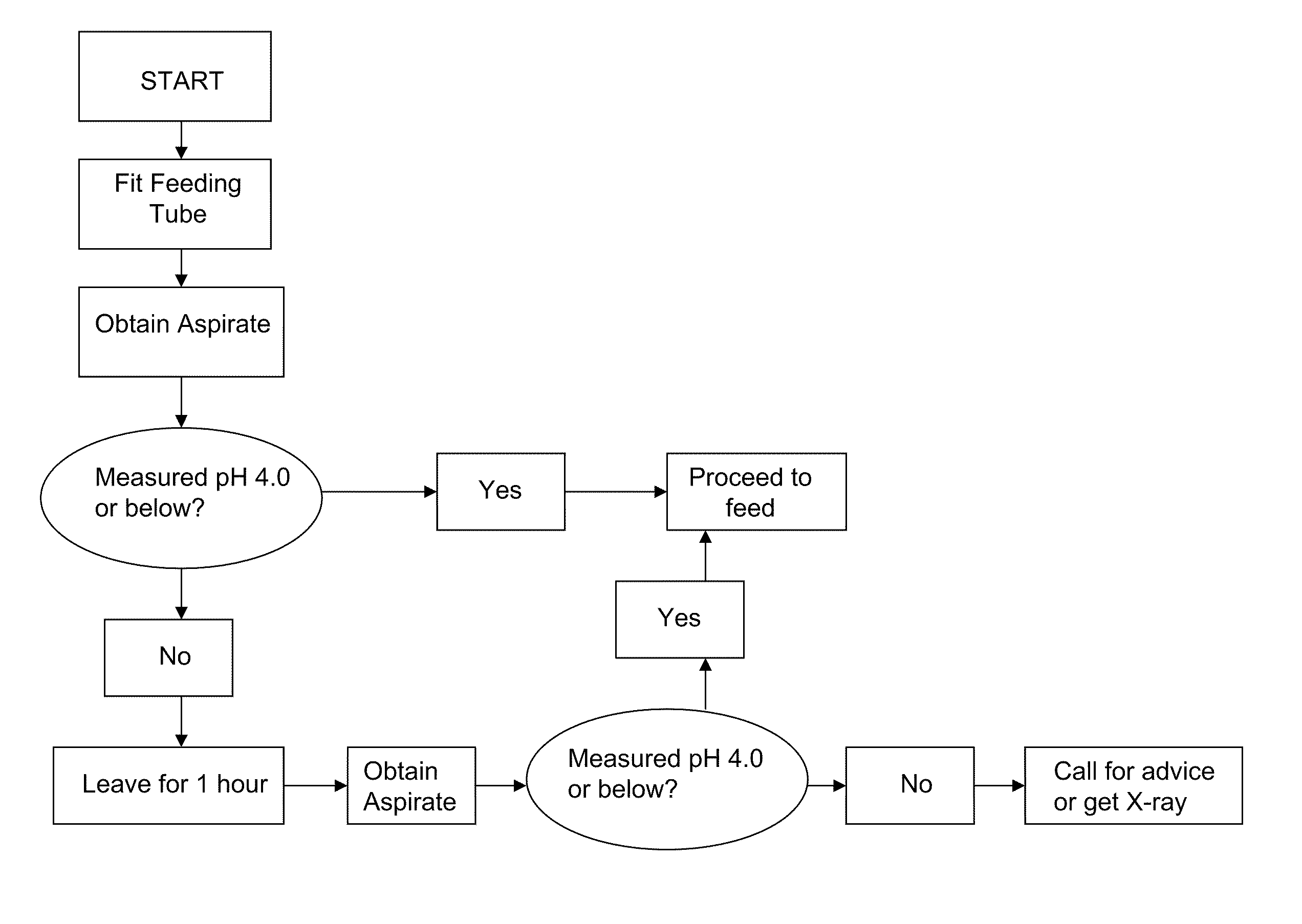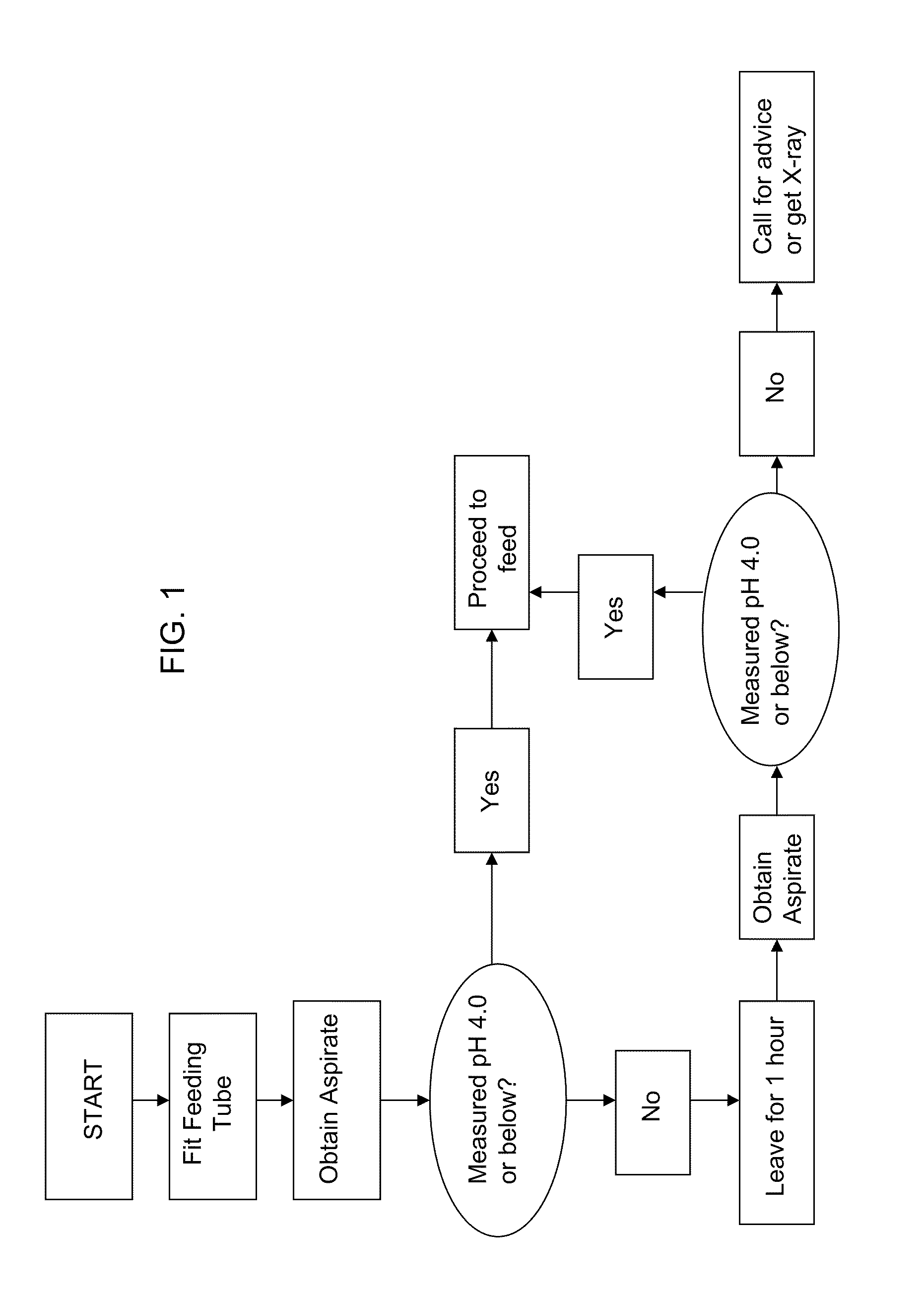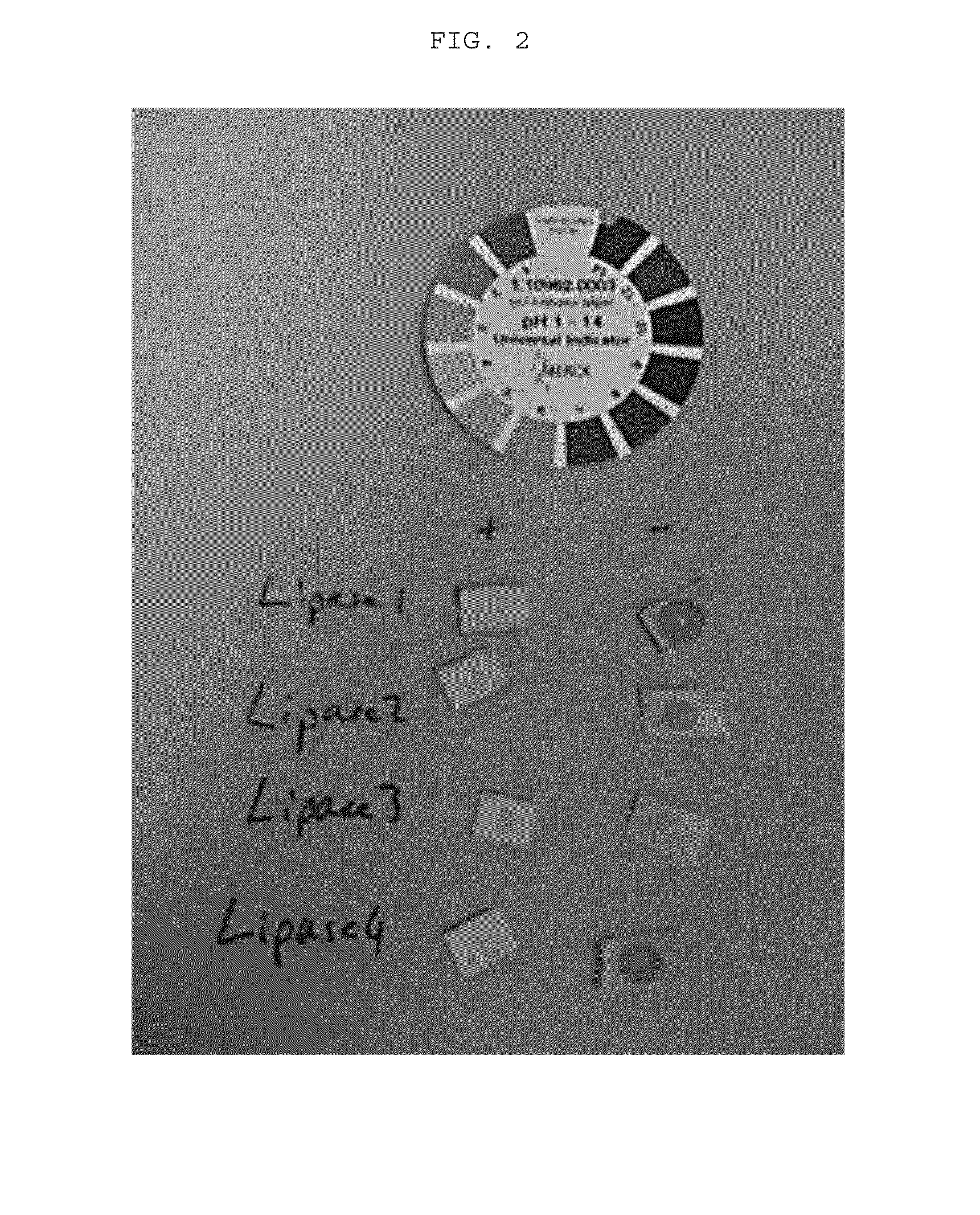Assay for positioning a feeding tube and method thereof
a feeding tube and positioning technology, applied in the field of medical diagnostics, can solve the problems of inconvenient feeding tube positioning, prolonged feeding period, and harm to patients, and achieve the effect of accurate positioning of feeding tubes
- Summary
- Abstract
- Description
- Claims
- Application Information
AI Technical Summary
Benefits of technology
Problems solved by technology
Method used
Image
Examples
example one
[0042]The assay of the present invention has an ester chemical impregnated into Ph indicator paper. The impregnation was carried out by adding 1 ml of tributyrin from Sigma to 9 ml of water, after which the mixture was vigorously shaken for 30 seconds to disperse tributyrin throughout the water in micro-droplets. The pH indicator paper was immersed into the resulting mixture, removed and then dried to evaporate the residual water. Once dried, the prepared pH indicator paper containing tributyrin had a 20 microlitre drop applied which contained a dissolved lipase from Amano. Alongside this, a second pH indicator paper from the same source, but lacking the impregnated tributyrin had another 20 microlitre drop of the same dissolved lipase applied. After a short period the pH was examined using the reference pH indicator scale provided by the pH indicator paper manufacturer. The pH of the indicator paper containing the tributyrin was pH 4, while the control pH indicator measurement with...
example two
[0043]It is well known in the art that the biochemistry and physiology between rabbit gastric lipase (RGL) and human gastric lipase (HGL) are similar. (See, Gargouri et al. (Biochimica et Biophysica Acta, 1006 (1989) 255-27, “Gastric lipases: biochemical and physiological studies.”) Therefore, a sample containing lyphophilized rabbit stomach extracts (JO4001) were obtained after soaking stomachs in an appropriate buffer. The procedure corresponds to the first step of gastric lipase purification as reported in Carriere et al. (Eur. J. Biochem. (1991) 202:75-83). “Purification and biochemical characterization of dog gastric lipase.”)
[0044]Lipase activity was measured at 5.5 using the pH-stat technique and tributyrin as substrate (See, Enzymology at Interfaces and Physiology of Lipolysis, “Standard assay of gastric lipase using pHstat and tributyrin as substrate”) according to Moreau et al., Biochem Biophys Ascta. 960: 286-93 (1988). “Purification, characterization and kinetic properti...
example three
[0047]A significant aspect of the present invention is providing a point of care test for determining proper placement of a feeding tube which can be readily used in a clinical bedside environment. To make the test easier to read, an alternate pH strip design was tested using yes / no technology similar to home pregnancy test kits. The pH strip was prepared with 0.2% w / v phenol red, 1% w / v tributyrin in methanol. The pH was increased to 9.5 by the addition of sodium hydroxide. The phenol red indictor test shows a color change for a pH below 6.8 (yellow) and no change for a above 8.2 (red). The initial pH before applying the sample is high and thus the phenol red is red in color due to the addition of sodium hydroxide in formulating the strip. Only when the enzyme and substrate are both present is sufficient acid generated in the strip to lower the pH enough to allow the phenol red to convert from a red color to a yellow color. In the absence of enzyme or substrate the acid cannot form...
PUM
| Property | Measurement | Unit |
|---|---|---|
| pH | aaaaa | aaaaa |
| pH | aaaaa | aaaaa |
| pH | aaaaa | aaaaa |
Abstract
Description
Claims
Application Information
 Login to View More
Login to View More - R&D
- Intellectual Property
- Life Sciences
- Materials
- Tech Scout
- Unparalleled Data Quality
- Higher Quality Content
- 60% Fewer Hallucinations
Browse by: Latest US Patents, China's latest patents, Technical Efficacy Thesaurus, Application Domain, Technology Topic, Popular Technical Reports.
© 2025 PatSnap. All rights reserved.Legal|Privacy policy|Modern Slavery Act Transparency Statement|Sitemap|About US| Contact US: help@patsnap.com



